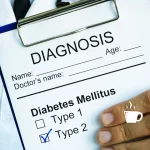Physical Address
304 North Cardinal St.
Dorchester Center, MA 02124

Distinguishing between an anxiety attack and a panic attack is crucial for effectively managing and treating these conditions. Though often used interchangeably in everyday conversation, these terms represent two distinct experiences. Knowing the differences can lead to better personal understanding and more targeted help when needed.
This article delves into the key distinctions between anxiety and panic attacks, from their symptoms and triggers to their treatment options. Our goal is to demystify these terms, allowing you to recognize which type of attack you or someone you know might be experiencing and how to approach its management.

An anxiety attack, often referred to in discussions about mental health, is not a clinically defined term but is widely used to describe a state where anxiety levels are significantly heightened. Unlike panic attacks, which can strike suddenly and without warning, anxiety attacks usually develop gradually. They stem from a buildup of stress and worry about potential adverse events or outcomes, often associated with specific stressors.
The symptoms of an anxiety attack are less intense than those of a panic attack but can be equally debilitating. Individuals may experience a progressive increase in nervousness, restlessness, and a sense of dread. Physical manifestations might include an increased heart rate, rapid breathing, or muscle tension. These symptoms escalate as the perceived threat becomes more immediate, culminating in what is colloquially known as an anxiety attack.
This escalation is typically tied to specific situations or concerns, such as worrying about upcoming responsibilities at work or ongoing personal conflicts. The anxiety builds as the individual focuses more on potential negative outcomes, creating a feedback loop that intensifies the anxiety. This process highlights the anticipatory nature of anxiety attacks, where worry about the future plays a central role.
Effective management of anxiety attacks involves addressing the underlying stressors. Techniques like cognitive-behavioral therapy (CBT) can help individuals change negative thought patterns that fuel anxiety. Additionally, stress management strategies such as mindfulness exercises, regular physical activity, and adequate sleep are vital in preventing the escalation of anxiety into an attack.
Recognizing the gradual buildup and contextual triggers of an anxiety attack is key to managing and mitigating its effects. By understanding and addressing these factors, individuals can reduce the frequency and intensity of their anxiety attacks, leading to better mental health and improved quality of life.

A panic attack is recognized clinically as a sudden and intense surge of fear that strikes without warning. This condition is characterized by its abrupt onset and the severe nature of its symptoms, which can peak within minutes. Panic attacks can be so intense that they feel crippling, leading individuals to feel detached from reality or fearful of an impending doom, including fears of dying or losing control.
The symptoms of a panic attack are both physical and psychological, and their severity can be overwhelming. Common physical symptoms include palpitations, chest pain, trembling, sweating, and sensations of shortness of breath or smothering. These symptoms often mimic those of a heart attack, which can increase anxiety and fear during an attack. Psychologically, individuals may experience a loss of control, a fear of impending disaster, or a strong desire to flee the situation.
Unlike anxiety attacks, panic attacks often occur without a clear trigger. They can arise from a state of calm or anxiety and do not necessarily have a direct connection to specific stressors. This unpredictability can make panic attacks particularly alarming and difficult to manage without professional help.
Treatment for panic attacks typically involves a combination of psychotherapy and medication. Cognitive-behavioral therapy (CBT) is particularly effective, helping individuals to understand the patterns and triggers of their attacks and to develop coping strategies. In some cases, medications such as selective serotonin reuptake inhibitors (SSRIs) or benzodiazepines are used to manage symptoms.
Understanding the nature of panic attacks is crucial for those affected. With the right treatment and support, individuals can learn to manage their symptoms and reduce the frequency and intensity of their attacks, leading to a better quality of life and increased well-being.

The triggers for anxiety and panic attacks differ significantly, impacting how each condition manifests and is experienced. Understanding these differences is key to managing and treating each type of attack appropriately.
Anxiety attacks are often triggered by an increasing worry about a specific situation or outcome. These triggers are usually identifiable and related to external stressors. For example, someone might experience heightened anxiety due to looming deadlines at work, financial pressures, or relationship issues. The anxiety builds gradually as the event approaches or as the person dwells on the potential negative outcomes.
Panic attacks, in contrast, do not always have a clear or identifiable trigger. They can occur spontaneously and unexpectedly, without any apparent external cause. This unpredictability is one of the most distressing aspects of panic attacks. Some individuals may have panic attacks triggered by specific phobias—such as fear of flying or certain animals—which can prompt an attack even in a seemingly calm state.
This difference in triggers necessitates different management strategies. For anxiety attacks, the focus is often on managing the stressor and developing coping mechanisms related to specific worries or fears. Techniques such as problem-solving or exposure therapy can be effective.
For panic attacks, the management often involves learning to cope with the unpredictability of attacks through general relaxation techniques, mindfulness, and grounding exercises that help manage acute symptoms. Therapy may also focus on psychological resilience and desensitization to the physical sensations of panic.
Recognizing whether an attack is driven by identifiable stressors or appears without warning can guide the most effective treatment approaches, helping individuals regain control over their lives and reduce the impact of these episodes.

Understanding the symptoms of anxiety and panic attacks is crucial for recognizing and differentiating between them. Although both conditions share certain physical and emotional responses, their symptoms, onset, and intensity vary significantly, affecting how they should be managed.
Anxiety attacks often manifest gradually, with symptoms intensifying as stress or anxiety increases. Common symptoms include a feeling of nervousness, increased heart rate, sweating, trembling, and a pervasive sense of dread or worry. These symptoms are usually tied to thoughts about potential future disasters or negative outcomes, making the individual feel constantly on edge.
Panic attacks, by contrast, strike suddenly and peak within minutes. The symptoms of a panic attack are more intense and disruptive, including severe palpitations, chest pain, dizziness, shortness of breath, and a choking sensation. Panic attacks often come with an overwhelming fear of losing control or dying, which can be terrifying for the sufferer.
The onset of symptoms also differs between the two types of attacks. Anxiety symptoms build up over time and are closely linked to specific stressors or worries. Panic attack symptoms can emerge out of nowhere and escalate quickly, often without any obvious cause or trigger.
Physically, panic attacks can be so intense that they are sometimes mistaken for heart attacks, which necessitates a clear understanding of the symptoms for proper response and treatment. The fear and avoidance of another attack can also lead to significant behavioral changes, further complicating the condition.
Recognizing these differences in symptoms and their onset can help sufferers and healthcare providers formulate more effective treatment plans tailored to each type of attack, enhancing the ability to manage and mitigate their impacts effectively.

The duration of anxiety and panic attacks can vary significantly, which is an important aspect to consider when understanding and managing these conditions. Knowing how long these attacks typically last helps individuals and healthcare providers develop effective coping strategies and interventions.
Anxiety attacks usually develop gradually and can last for a prolonged period. The duration often depends on the individual’s exposure to the stressor and their ability to manage the underlying anxiety. For some, symptoms might persist for several minutes, while for others, they can last for hours if the stressor remains unresolved or the person continues to dwell on anxious thoughts.
In contrast, panic attacks are generally more acute and shorter in duration. A typical panic attack peaks within 10 minutes and then subsides. However, the aftermath of a panic attack can leave individuals feeling fatigued, shaken, and emotionally drained, which might take longer to recover from.
This difference in duration also impacts how each type of attack is treated. For anxiety attacks, prolonged exposure to stressors requires sustained coping mechanisms and strategies such as relaxation techniques, long-term behavioral therapy, and sometimes medication to manage ongoing anxiety.
Panic attacks, due to their brief yet intense nature, often require immediate, short-term interventions like breathing exercises, grounding techniques, or even short-term use of prescribed medication to manage acute symptoms and prevent future episodes.
Understanding these nuances in duration and their implications for treatment and management is crucial for those experiencing these attacks, as well as for clinicians providing care, ensuring that interventions are timely, effective, and appropriate for the type of attack being experienced.

The treatment options for anxiety and panic attacks are varied and tailored to the specific symptoms and needs of the individual. Both conditions can be effectively managed with a combination of therapy, medication, and lifestyle adjustments, each playing a crucial role in comprehensive treatment plans.
Cognitive-behavioral therapy (CBT) is a cornerstone of treatment for both anxiety and panic attacks. This type of therapy helps individuals identify and change detrimental thought patterns that contribute to anxiety and panic symptoms. CBT also involves exposure therapy, where patients gradually face their fears in a controlled environment, which is particularly useful for panic attack sufferers.
Medication is another key component, often used in conjunction with therapy. For anxiety attacks, antidepressants like SSRIs and SNRIs are commonly prescribed to help regulate mood and reduce anxiety symptoms. For panic attacks, both antidepressants and anti-anxiety medications, such as benzodiazepines, may be used. These medications can help prevent panic attacks or at least lessen their severity.
Lifestyle changes also play an integral role in managing both conditions. Regular physical activity, adequate sleep, and a balanced diet can significantly improve anxiety and panic symptoms. Additionally, mindfulness practices, such as yoga and meditation, can help individuals maintain calm and manage stress more effectively.
Professional guidance is essential when dealing with severe cases of anxiety or panic attacks. A mental health professional can provide a tailored treatment plan that includes the most appropriate therapies and medications. They can also offer support and strategies for coping with symptoms daily.
In conclusion, the effective treatment of anxiety and panic attacks involves a multifaceted approach. Therapy, medication, and lifestyle modifications, guided by professional advice, are all necessary for managing these conditions, improving quality of life, and reducing the frequency and intensity of attacks.

Preventing anxiety and panic attacks involves a holistic approach that includes lifestyle modifications, stress management techniques, and awareness of potential triggers. These preventative strategies can significantly reduce the frequency and severity of attacks, enhancing overall well-being.
Regular physical exercise is a powerful tool in preventing both anxiety and panic attacks. Exercise not only improves physical health but also releases endorphins, chemicals in the brain that act as natural painkillers and mood elevators. Activities such as running, swimming, or yoga can help maintain a balanced mood and reduce stress.
Diet also plays a crucial role in managing anxiety levels. Consuming a balanced diet rich in vegetables, fruits, whole grains, and lean proteins can stabilize blood sugar and reduce mood swings. It is also advisable to limit or avoid caffeine and alcohol, as both can exacerbate anxiety and trigger panic attacks in susceptible individuals.
Adequate sleep is essential for mental health. Sleep deprivation can increase anxiety and susceptibility to panic attacks. Establishing a regular sleep schedule and creating a calming bedtime routine are effective ways to improve sleep quality and reduce anxiety.
Mindfulness and relaxation techniques such as meditation, deep breathing exercises, and progressive muscle relaxation can also prevent anxiety and panic attacks. These practices help manage stress and promote a state of calm, making it easier to cope with daily stressors without becoming overwhelmed.
Finally, building a strong support network of friends, family, and possibly a professional therapist can provide additional resources and emotional support. Knowing that there is someone to turn to in times of stress can be incredibly reassuring and can help mitigate the onset of anxiety and panic attacks.

Seeking professional help is crucial when anxiety or panic attacks become frequent or severe enough to interfere with daily life. Recognizing when it is time to seek help is an important step in managing mental health effectively and preventing further complications.
It’s advisable to consult a healthcare provider if you or someone you know experiences panic or anxiety attacks that are unpredictable and overwhelming. These episodes can significantly impair one’s ability to function normally at work, at home, or in social settings. A professional can diagnose the underlying causes and recommend appropriate treatment options.
During the consultation, the healthcare provider will likely discuss symptoms, triggers, and any patterns noted in the attacks. This discussion helps in differentiating between panic and anxiety attacks and ruling out other medical conditions that might mimic these disorders. It is also an opportunity to assess the impact of the attacks on the individual’s quality of life.
Based on the evaluation, a tailored treatment plan including medication, therapy, and lifestyle recommendations will be developed. For many, a combination of these approaches yields the best results. Engaging in regular therapy sessions, such as cognitive-behavioral therapy, has proven particularly effective in teaching coping mechanisms and strategies to manage symptoms.
Lastly, it’s essential not to delay seeking help out of fear or stigma associated with mental health disorders. Early intervention can lead to better outcomes, reducing the severity of symptoms and improving overall life satisfaction. Encouragement from friends and family can also be pivotal in supporting someone through their journey to recovery.

By understanding the key differences between an anxiety attack and a panic attack, individuals can better manage their symptoms and seek appropriate treatment. Recognizing the early signs and obtaining professional help is crucial for effective management and recovery. It’s important to remember that both conditions are treatable, and many people live full and productive lives with the right support and strategies.
Education and awareness are vital in coping with and treating both anxiety and panic attacks. For those looking to delve deeper into understanding these conditions or seeking resources for help, visiting trusted medical and mental health websites can provide additional insights. For more details, visit the website.




